Chord Electronics Mojo 2
Couldn't load pickup availability
Free Shipping On All Orders, No Minimums.
We offer free 2-day shipping on most products within the continental US.
Weekdays - Orders placed by 2pm EST ship same day. Orders placed after 2pm EST will ship the following business day.
Weekends - Orders placed on Saturday and Sunday will ship Monday.
Orders requiring motor freight delivery may take more than two business days. Once your order has shipped, you'll receive a shipping confirmation email with a tracking number for easy tracking.
Orders that contain items that are currently backordered, special order, or out of stock will ship complete once all items are in-stock unless otherwise requested.
If you need it faster, you will have the option of choosing a quicker shipping option when you checkout on the website.
At this time, we do not ship internationally and orders to Hawaii and Alaska may incur an additional shipping charge. Please contact us at 888.899.8776 or email support@audioadvice.com to confirm.
Rerouting and Address Changes
We cannot make ANY address changes once an order is placed. If you are unable to accept delivery of your package as ordered, we will need to cancel your order, return the package to sender and have you replace your order through our website.
Keep the Box
We suggest you keep the shipping box or boxes for at least 30 days. It is actually a great idea to keep boxes for audio products for the life of the product. Having the box and all packing will increase the trade-in value should you decide to move up and they are handy to have should you ever need to send the unit in for repair.
How To Receive a Motor Freight Order
The trucking company will contact you to schedule a convenient time to deliver the order. Please note that you must be present for delivery.
Visually inspect the box to make sure you see no signs of damage. If you notice any damage at all, take some pictures with your phone and make a note of them on the delivery receipt the driver will ask you to sign. If it is obvious that the product is damaged, please refuse the order and contact us immediately at 888.899.8776 or email support@audioadvice.com.
Open your box as soon as possible and inspect the product for damage and contact us if you find anything wrong.
uShip In-Home Delivery
Due to current concerns surrounding COVID-19, uShip is able to offer THRESHOLD SERVICE ONLY at this time. To ensure everyone’s safety, uShip is advising carriers to refrain from making room-of-choice deliveries. Threshold service consists of the shipment being brought into the first door of the address or the lobby of an apartment/condo, and does not include set-up, installation, assembly or debris removal.
What to Expect: Most oversized items will be delivered within 2-3 weeks. Your carrier will place your item inside the first door of the address or the lobby of an apartment/condo.
Appointment Scheduling: Your delivery partner will call 24-48 hours prior to delivery to arrange an appointment window.
How to prepare for in-home delivery:
- Determine the clearest path from the street to your home
- Measure entrances and hallways to ensure your item will fit
- Remove any wall hangings or clutter to ensure a clear path and to prevent damages
- Remove old furnishings to allow placement for your new piece
Check your furniture for damages: We rarely expect damaged furniture, but in the instance it does happen, we have you covered. Once your item’s packaging is removed, check for any damages that may have occurred in transit. Take pictures of any damages and notate appropriately on the delivery receipt. Keep possession of the damaged piece and contact us via phone or email and we’ll start the process to repair/replace your new piece of furniture. For uShip customer support, please call 800-698-7447.
At Audio Advice, we pride ourselves on customer satisfaction. We'll bend over backward to make sure you're 100% satisfied and we won't accept anything less. We offer 30-day hassle-free returns and personalized service from real, live people.
If an item doesn't meet your expectations, you may return or exchange it in its original condition and packaging within 30 days for a full refund, minus shipping fees. Items shipped back in like new condition through standard shipping carriers will only incur a flat fee of $15 to return. If the items were initially shipped through free scheduled delivery via motor freight (commonly referred to as LTL), returning them will result in return shipping fees starting at $150. These items include but are not limited to, oversized items such as TVs, certain subwoofers, floorstanding speakers, furniture, and most items weighing over 75 pounds. Return fees will also apply for exchanges. We want to treat your system as if it is our own and want you to be completely satisfied with your purchase.
Please see the instructions below. We only accept returns for any product purchased directly from our website. If merchandise is not returned in its original condition or is missing packaging, manuals, accessories or other parts, or the resale value of the product has been impaired, a partial refund will be given and calculated on a case-by-case basis.
Non-Returnable Items
The following items cannot be returned or cancelled:
- Special/Custom Order Items
- Open Box Products
- Gift Cards
- In-ear headphones cannot be returned once the packaging has been opened due to personal hygiene reasons. Please contact our customer care team if you'd like help choosing.
-
Turntables With a Broken Stylus: All turntables ship out with the stylus intact. If you return a turntable or phono cartridge with a broken or missing stylus you will be subject to a return fee. Please be careful when setting up your turntable and contact us with any questions.
Is It Easy To Return An Item?
Yes, simply give us a call at 888.899.8776 or you can email our support team at support@audioadvice.com. Many times our team of experts can help figure out why the product might not be working like you expected and get things fixed over the phone, so don’t be surprised if we ask a few questions, we love troubleshooting!
If our tech help can not make you happy, we will email over a return shipping label with a Return Number.
Hopefully, you saved all of the original item’s box and packaging inserts. You will want to pack back up your return or exchange in the same way it came out of the original box. Once you have everything packaged correctly, tape the box on the top and bottom to assure it stays together. If Audio Advice shipped the item to you inside a second box, it's a good idea to use that same extra box to help prevent damage on its way back to us. To avoid it accidentally coming back to you, use a magic marker to cross out the old shipping label or just tear it off.
The return shipping label we send you will have our address on it, just make sure you take the box to the right shipper (UPS, FEDEX, or USPS) as per the label.
If you are close to one of our stores, please let us know if it is more convenient for you to return it to us directly. You will still need to get a return number by contacting us and shipping and/or restocking charges may apply.
When Will I See My Refund?
It usually takes around 7-14 days for the refund to show up on the payment method you used. We do inspect all returns for damage and accuracy of the item inside the box before issuing a refund. Some items may be subject to shipping and restocking fees.
Can I Exchange My Purchase For Something Different?
Sometimes those big speakers just don’t fit in the room or you might have bought a small subwoofer and later found out you’d love a bigger one. If you would like to make an exchange within 30 days of receiving your item, just give us a call at 888.899.8776 or email support@audioadvice.com and we will help work out the details. Additional shipping charges and return costs may apply.
How Do I Cancel An Order?
If the item has already shipped out or is a special order item, it is not possible to cancel the order. Please contact us at 888.899.8776 or email support@audioadvice.com to start the return process.
What If I Find Shipping Damage?
We need to know right away about any shipping damage. Please contact us at 888.899.8776 or email support@audioadvice.com within 48 hours of your delivery so we can get the ball rolling on making things right. It’s very helpful to take some pictures and email them to us if possible.
Can I Refuse A Shipment?
You can, but unless the item is damaged, shipping and restocking fees will be deducted from your refund. If your item arrives damaged and you are lucky enough to be there, snap some quick pics and refuse the order. Then contact us so we can get a replacement on the way.
What Happens If My Order Is Defective?
This is actually pretty rare, most consumer electronics work fine out of the box 99.9% of the time. We’d like for you to contact us first by calling 888.899.8776 or email support@audioadvice.com so we can help get to the bottom of things. If your item is indeed defective during the first 30 days, we can usually exchange it for a new, replacement unit.
What About Service After 30 Days?
Audio Advice has a great relationship with all of our brands and can help you with warranty service by the brand after our 30-day guarantee period. Even after the warranty expires, we can arrange for service by the brand on products purchased from Audio Advice. Just call 888.899.8776 or email support@audioadvice.com.
How Do You Determine A Restocking Fee?
You may not believe it, but sometimes we receive items back that were put in the box with zero packaging and are completely destroyed or are missing many of the pieces that came with the item. We also track serial numbers and will get back different serial numbers. We’ve even seen different items than what we shipped out be returned. However, it’s very important to package your return properly so that nothing goes missing or gets damaged in shipping, which will result in a restocking fee or even no refund at all. If a product is opened and the market value of the product is reduced, then a restocking fee may be applied to the cost of restocking and the reduced market value of the product. The bottom line is if you treat us fairly, we will do the same.
Audio Advice strives to provide industry-leading support and service while also maintaining the lowest prices available on products for our customers. We work hard with our vendors to bring our customers the best products at each price point. As a part of that process, we work with our vendors to provide the lowest pricing in our stores and on our website.
Our prices should always be the same as any other authorized dealer, including big-box retailers and major online retailers.
If you believe that you have found a lower advertised price from a legitimate authorized seller, call us and let us know so we can make sure we can correct any inadvertent error on our side. As a matter of policy, we update our prices automatically if a vendor changes its authorized pricing policies, so we generally have the best prices all the time. Increasingly, there are knock-off copies of products online, usually sold by non-authorized dealers.
Please be sure that the item meets the following conditions:
- The item is brand new, in stock, and available for purchase
- The item has the identical model number, color, etc as the item on our site.
- The seller is an authorized dealer
As always, our goal is to provide a terrific customer experience, including industry low prices. We appreciate your support.
Overview
The High Notes

Audio Nirvana That’s Highly Pocketable

Award-Winning Rob Watts Design

USB-C Audio/Data Input
Company & Product Overview
It’s amazing to us that fighter jets inspired the designs in all of Chord’s products. But, what do fighter jets and high-performance audio have in common? John Franks. He’s the founder of Chord Electronics — a brand born from the world of avionics.
In 1982, John Franks was designing electronics for fighter jets. If an electrical failure occurred, the results could be catastrophic. This is where the love for quality, attention to detail, and the Chord ethos to do things “right,” took flight.
A self-described “audiophile,” Franks started Chord in 1989 out of his home in the United Kingdom and baked this ethos into the world-class amplifiers he designed. Word got out, and a year later the BBC started using Chord gear.
Today, Chord products can be found in the most famous recording studios around the world, including Sony, Abbey Road, the Royal Opera House, and even George Lucas’s Skywalker Sound!
With new high-end headphones coming out every year, Chord recognized the growing demand for better quality sound on the go. So, Chord came out with a line of standalone DACs, which quickly became reference-level favorites by headphone lovers. Chord DACs like Chord Hugo 2 Portable DAC/Headphone Amp are easy to use and carry. However, Chord Mojo 2 is the smallest and most affordable model, yet.
At Audio Advice, we are big fans of companies that use trickle-down technologies that make their less expensive products better, and the Chord Mojo 2 is no exception.
Design & Build Quality
John Franks’ background in airplane design is back front and center again with the new Mojo 2. The chassis is machined from solid aircraft-grade aluminum and then bead-blasted with a matte black finish that repels fingerprints well.
Chord is serious about build quality. To maintain its high standards, Chord designs and builds all products inside its UK facility, so the fit and finish on every part of the Mojo 2 is exceptional. Like its predecessor, it weighs less than half a pound, but the CNC milled aluminum chassis is built like an aircraft that would make 007 jealous.
Visually, the Mojo 2’s black aluminum chassis looks like something James Bond would be proud to use. Like all Chord products, the Mojo 2’s shapely design is interesting and unique. The main body of the unit is rectangular with Chord’s signature rounded, smooth edges. The device is less than 1-inch tall, just slightly under 2.5-inches wide, and a little over 3-inches long, so it easily slips into a pocket, a briefcase, or a purse.
On one side of the Mojo 2, there are two 3.5 mini headphone jacks for connecting two pairs of headphones at once, and we love this. It’s fantastic to see Chord has kept this coveted feature from the original Mojo, as this makes listening with a friend or A/B testing two different pairs of headphones extremely easy. Either of the two headphone outputs can also be used for plugging an audio cable into an audio system or a set of powered speakers.


On the other end are all the digital inputs. Mojo 2 now has a dual data input, which opens it up for use with Chord M Scaler! There is an optical TOSLINK input and a mini-plug coaxial digital in, plus a micro USB audio in, and one more micro USB dedicated to charging the unit, so you can continue using Mojo 2 while it charges. Right below the micro-USB & coaxial digital inputs is the coolest addition to the Mojo 2. Now, there is a new USB Type-C port that will accept digital audio from USB-C sources.
On top of the unit, there are four rounded “sphere” style buttons which all roll like the Hugo 2. The buttons (referred to as the “power button, “volume buttons,” and “menu button”) illuminate different colors to indicate status, sample rate, mode, and access to special EQ tone controls. But, it’s what’s inside the unit that makes the Mojo 2 special.
Features & Technology
Indeed, there’s mojo in there — and it all happens inside where a custom-designed DAC chip lets you bypass the internal DAC in your computer or phone to improve the analog sound you hear.
Award-Winning Rob Watts Design
Designed completely in-house using Rob Watts’ multi-award-winning DAC technology, Chord is one of the few in the world that can design and build its own proprietary USB DACs. It uses crystal oscillators that are nearly 20 times faster than regular DACs.
This produces analog signals with extremely low-noise, so you hear more details on your recording. Think crystal clear audio the way you would hear it in the recording studio.

Revamped FPGA Artix-7 DAC Chip
Taking Mojo’s already transparent sound to the next level, Mojo 2 has a completely revamped FPGA Artix-7 DAC chip with completely rewritten code that squeezes out every last drop of performance from the silicone.
Built completely from the ground up, this Chord-designed FPGA chip has an improved WTA filter with 40 DSP cores running at full rate — that’s almost 500 times faster than military-grade DAC chips!
The noise shapers have also been optimized in Mojo 2 to improve signal accuracy for better depth and detail retrieval. Think music that faithfully reproduces micro-details from the original recording with fantastic accuracy.
Powerful Headphone Amp
Also housed inside Mojo 2 is a massively powerful headphone amp that will make any headphones or powered speakers come alive. Mojo 2 provides an impressive output that can drive headphones from 4 to 800 Ohms — enough power to drive even the most power-hungry headphones on the market. No matter how you stream or play digital music, Mojo 2 greatly enhances the presentation of details and dynamics coming out of your laptop or phone like nothing else in this pocketable form.
USB-C Audio/Data Input
The new USB-C audio input not only adds more flexibility but also provides even more transparency than before thanks to an improved custom circuit design — greatly enhancing the neutrality of the Mojo’s already natural-sounding sonic signature.
Since many people will be using Mojo 2 to work from home or remote with USB-C compatible laptops & smart devices, we see the USB-C audio input as an added convenience for those wanting the best audio fidelity with their devices.
Improved Battery Performance
Mojo 2’s greatly improved battery management delivers faster charging rates, a huge 75 % reduction in power loss, plus a 9 % capacity gain. So, it charges faster, battery life lasts longer and it runs much cooler while charging than the previous Mojo! You should be able to expect more than 8 hours on headphones with USB, and this is all thanks to a new FPGA charging circuit that squeezes out every last drop of performance from Chord’s custom-designed high-performance DAC chip.
Intelligent Desktop Mode
Mojo 2 can be left connected to a power source at all times if desired. In this mode, Mojo 2 regulates charging to preserve the battery when it’s connected to a power source. Once fully charged, Mojo 2’s menu button and battery status light display magenta, indicating the end of the charge cycle and the initiation of Intelligent Desktop Mode.
New Menu Button System
The menu button illuminates different colors to show advanced features cleverly tucked away in Mojo 2’s new menu system — including mute, crossfeed, button-lock, and acoustically transparent DSP tone controls. Mojo 2’s new tone control is a world’s first in EQ as it does not harm the signal in any way, whatsoever — letting you tailor the sound perfectly to any headphones.

Performance
Setting up Mojo 2 was simple. Connect it to your smartphone, or computer, plug your headphones in and press play.
In terms of playback, Mojo 2 will play any audio file you can find — even up to 32-bit 768kHz! The USB ports and coaxial digital input will accept this signal while optical is limited to 24 bit 192. Mojo 2 also handles DSD files up to quad DSD256. The power button lights up with different colors to show the sample rate. With just a glance at the power button’s LED light, you will see exactly what sample rate your Mojo 2 is streaming.
We tested Mojo 2's performance with most people’s ergonomic scenarios in mind. We streamed hi-res music from Qobuz using an iPhone connected to a pair of Mark Levinson №5909 Noise-Cancelling headphones for our on the go listening tests — and the Mojo 2 had no problem at all driving the №5909s — but it has the mojo to comfortably drive higher impedance headphones without breaking a sweat too.

The Mark Levinson №5909 are wireless closed-back headphones, but they have a cool passive mode that lets you unlock a wider range of frequencies once you use the bundled USB-C to stereo miniplug cable, making them a fantastic addition for more flexible listening with this DAC. For closed-back headphones, the soundstage is first-class and the sound profile is neutral — perfect for Mojo 2.
For testing Mojo 2’s Desktop Mode, we ran an Audioquest USB-C to C Cinnamon cable from our laptop directly into the Mojo 2’s new USB-C audio input and streamed high-quality audio at a sample rate of 44.1. Seeing the power button illuminate a deep red LED whenever CD-quality songs were streamed was cool.

Red: 44.1kHz — Orange: 48kHz — Yellow: 88.2kHz — Green: 96kHz — Light Blue: 176kHz — Blue: 192kHz — Magenta: 352kHz — Purple: 384kHz — Violet: 768KHz
First, we listened to a lot of different styles of music without Mojo 2 instantiated. This always gives us a better sense of how the music sounds just coming out of the laptop’s headphone jack. Then, we A/B tested the same music again with the Mojo 2 engaged.
While everything sounded substantially better with Mojo 2, some of the tracks that stood out were Mozart’s masterful intro to “Requiem in D Minor,” the classic rock crowd-pleaser “Come Together” by The Beatles, and the Motown duet “My Mistake (Was To Love You)” recorded by Marvin Gaye and Diana Ross in 1974.
First, we listened to music without Mojo 2. We got our ears warmed up with a classical orchestra rendition. We chose the intro to Mozart’s “Requiem in D Minor,” performed by The New Siberian Singers.
With just the headphone jack, we noticed a nice separation of detail in the No5909’s presentation. Each member of the ensemble stood out with some degree of distinction. Violins and tubas were warm, smooth, and present, but not immersive. Overall, the sound was easy for us to lean into.
Switching to the Mojo 2 is where it all became a lot more interesting. Immediately, we noticed big improvements in the soundstage. The stereo image took on another dimension. New layers of immersive details with clearer dynamics made our session come alive. Dynamic details weren’t just clearer; the entire soundscape sounded more holographic and musical.
Some portable DACs will sound as though a light smudge has just been wiped away from a pair of prescription eyeglasses. Others will sound as though a pair of polarized sunglasses are letting you see through a slightly “tinted” lens. Mojo 2 is not like hearing music through rose-colored glasses. Mojo 2 is more like a clear magnifying glass for sound that you can slip into your pocket.
With Mojo 2, we heard a wider top-end extension and a fuller dynamic range which opened up more musical details in the presentation. It’s as though the headphones’ entire soundstage just opened up with a sense of presentation that was noticeably wider than without.
We could hear the transient “attack” of arco strings more clearly as each violinist glided their bow up and down. We could hear more of the subtle dynamics. Each up-bow and down-bow was like hearing a string section performed live. Tubas resonated naturally with deeper and clearer low-end harmonics.
Without Mojo 2, the tiniest dynamic details fell into the background. This made the music lose the holographic sense of presentation it had gained with the Mojo. Details like individual voices in the choir ensemble sounded farther away and not as easy to pick out as they were with the Mojo 2.
When “Come Together” appeared next in our playlist, we were deeply impressed with the natural transparent sound of the Mojo 2, and especially its ability to preserve the artist’s vision. Recorded by The Beatles as the opening track for the iconic “Abbey Road” album, this cut ranks as one of “The 500 Greatest Songs of All Time” in Rolling Stone Magazine.
Recorded and mastered at London’s EMI Studios, the track features a wide separation of details that artfully plays with a sense of “space” in the mix. Due to the mastering process of these early Beatles recordings, these songs make great source material for hearing a DAC’s sound signature. They serve as a great reference for testing the musical presentation of any DAC worth its salt.
Because the separation of details is already so easy to perceive and pick out of the mix, a DAC will reveal its true colors as it performs the necessary digital to analog conversion to any digital audio file. This is what we mean when we talk about a DAC having a “sound signature.”
Natural harmonic details of George Harrison’s lead guitar sounded more transparent and more up-close. The guitar’s warm, smooth tone had a tuneful sense of timing that made us want to get up and move with the music.
Listening back without Mojo 2, we heard the lead guitar’s warm smooth tone, but there were fewer harmonic details. Without Mojo 2, the music still sounded great, but the holographic details and the dynamic realism disappeared into the background. With Mojo 2, it felt like we were in the studio with the band. We think it did a spectacular job of retaining the artists’ vision as The Beatles intended it.
The Mojo 2’s holographic immersion was conjured the most in Motown’s 1974 “My Mistake (Was To Love You),” recorded as a duet by Marvin Gaye and Diana Ross.
Immediately, the soundstage was wide open with a separation of details that didn’t just sound holographic — it felt immersive. The sound of the drum set came alive. Toms, snares, and cymbals were all clearer and packed more bottom-end weight we could actually feel.
When we removed the Mojo, the low-end energy almost completely disappeared. Using the Mojo 2 again brought it back to life. The rhythm and pacing of the kick drum “thumped” with a steadfast pulse to the bass guitar’s tuneful sense of timing. Immediately, we were back to swinging our shoulders and bobbing our heads along with the groove. The level of dynamic realism and crisp details were musical and so easy to get lost in.

Overall Recommendation
After several hours of listening, we have to hand it to Chord for creating another portable DAC amp that packs in this level of performance into such an affordable and pocketable package. If you own a decent pair of headphones or a good system, you really owe it to yourself to integrate the Mojo 2. Whether it’s a phone, tablet, or computer, you’ll get significant improvements out of your setup.
For its pocketable size, the Mojo 2 will blow you away. It’s also expandable. Attach it to Chord Poly and you’ve turned your little Mojo 2 into a fully-featured wireless music streamer! For anyone on the move, it’s a no-brainer. With just the Mojo 2, you’ll have everything you need to make headphones come to life on the go or even at home. Get the Mojo 2!
We think the price-point for this completely redesigned Mojo is a small investment for the significant upgrades in sound quality and the flexibility of use cases you’ll get. For a small pocketable DAC loaded with this many expandable features and the level of micro details that make portable or home audio setups come alive, the Chord Mojo 2 is amazing — and unbelievably so at this price point. We can’t imagine who wouldn’t choose this?
If you don't need mobility with your DAC and your budget is higher than the Mojo 2 then take a look at the Chord Hugo 2 Review which is more expensive and great for a desktop setup. Also, check out our Chord Electronics DAC lineup for all the other DACs in the Chord family.
Details & Specs
Key features and USPs
- New USB-C input
- New: world’s most advanced UHD DSP; advanced EQ adjustment
- New menu function incl. crossfeed, button lock, brightness and DSP
- Improved FPGA: greater resolution, power and efficiency
- Improved battery: larger capacity and intelligent desktop mode (derived from Hugo2)
- Improved WTA filtering: 40 DSP cores for better transparency and lower noise
- Full compatibility with Poly
- 1-year warranty
Design
- Designed, engineered and made in the UK
- Bead-blasted high-grade aluminium
- Four spherical control buttons incl. new menu button
- Small, light, pocketable
- Length: 83 mm (3.26 in.)
- Width: 62 mm (2.44 in.)
- Height: 22.90 mm (0.90 in)
- Net weight: 185 g (0.4 lbs)
Tech specs
- Output power @ 1 kHz/300 Ω: 90 mW
- Output power @ 1 kHz/30 Ω: 600 mW
- Output impedance: 0.06 Ω
- Dynamic range: 125 dB
- THD @ 2.5 V/300 Ω: 0.0003 %
Connectivity
- Five digital inputs: coax, dual-data coax, optical, Micro-USB and (new) USB-C
- Two 3.5 mm headphone outputs for shared listening/headphone comparison
- Wireless-ready for the Poly streamer/server



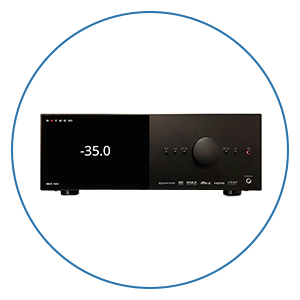



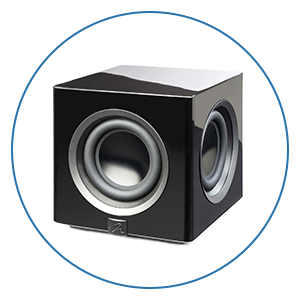

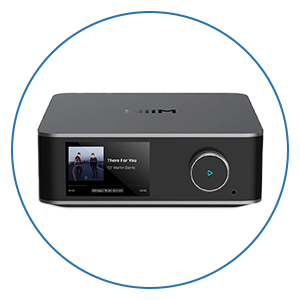
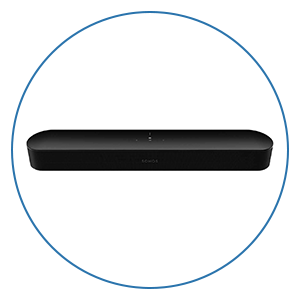



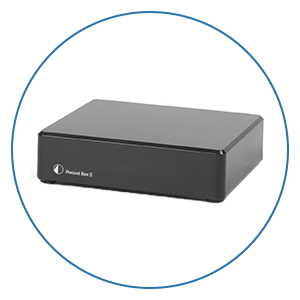




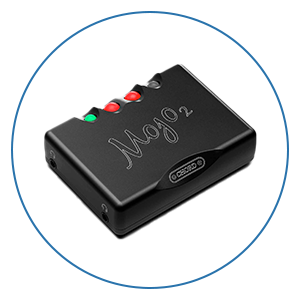

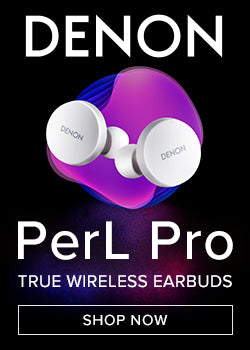

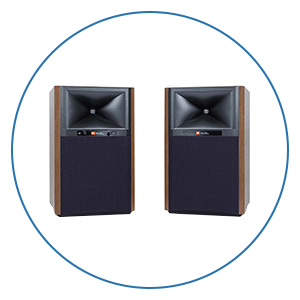
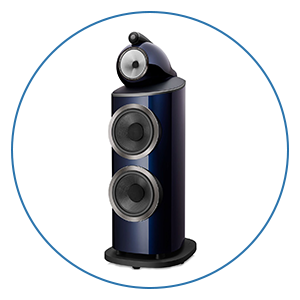
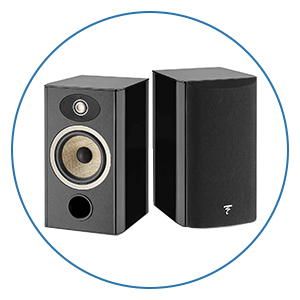





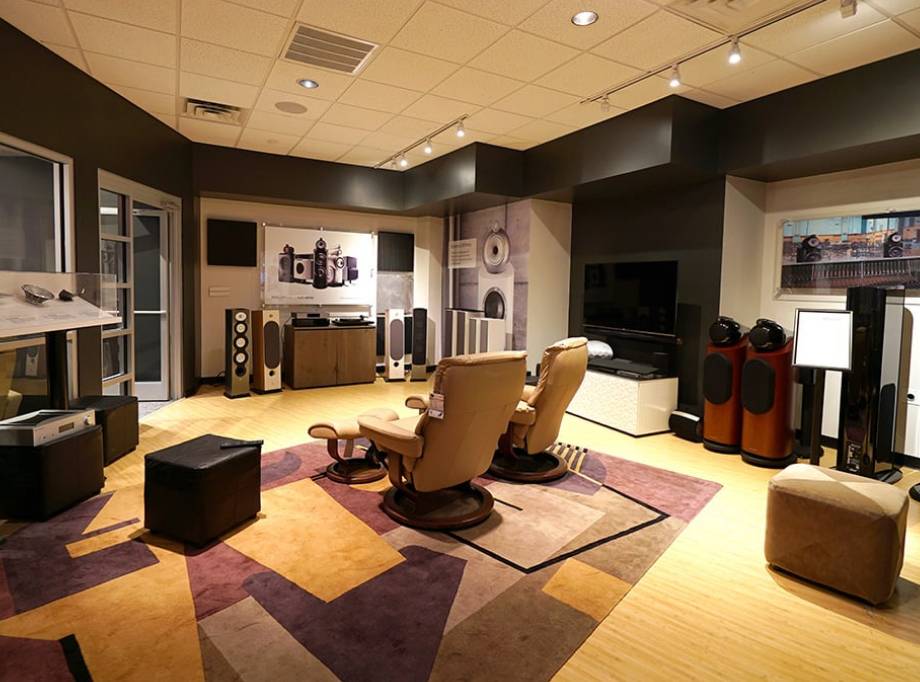
 Home Theater
Home Theater Speakers
Speakers Tower Speakers
Tower Speakers
 Bookshelf Speakers
Bookshelf Speakers
 Center Channel Speakers
Center Channel Speakers
 Wall & Ceiling Speakers
Wall & Ceiling Speakers
 Surround Speakers
Surround Speakers
 Dolby Atmos Speakers
Dolby Atmos Speakers
 Subwoofers
Subwoofers
 Soundbars
Soundbars
 Speaker Stands & Mounts
Speaker Stands & Mounts
 Components
Components Home Theater Receivers
Home Theater Receivers
 Surround Sound Processors
Surround Sound Processors
 Power Amps
Power Amps
 Movie Sources
Movie Sources
 TVs & Projectors
TVs & Projectors Televisions
Televisions
 Projectors
Projectors
 Projector Screens
Projector Screens
 TV & Projector Mounts
TV & Projector Mounts
 Seating & Furniture
Seating & Furniture Home Theater Seating
Home Theater Seating
 Media Cabinets
Media Cabinets
 A/V Racks & Shelves
A/V Racks & Shelves
 Accessories
Accessories
 Acoustic Treatments
Acoustic Treatments Absorption Panels
Absorption Panels
 Bass Trap Panels
Bass Trap Panels
 Diffusion Panels
Diffusion Panels
 Acoustic Treatment Packages
Acoustic Treatment Packages
 Cables & Accessories
Cables & Accessories HDMI Cables
HDMI Cables
 Analog Cables
Analog Cables
 Digital Cables
Digital Cables
 USB Cables
USB Cables
 Speaker Cables
Speaker Cables
 Subwoofer Cables
Subwoofer Cables
 Power Management
Power Management
 Featured & Deals
Featured & Deals Best Sellers
Best Sellers
 Sale
Sale
 Home Audio
Home Audio Outdoor Speakers
Outdoor Speakers
 Portable & Bluetooth
Portable & Bluetooth
 Wireless Speaker Systems
Wireless Speaker Systems
 Computer Speakers
Computer Speakers
 Powered Speakers
Powered Speakers
 Integrated Amplifiers
Integrated Amplifiers
 Power Amplifiers
Power Amplifiers
 Stereo Preamplifiers
Stereo Preamplifiers
 Stereo Receivers
Stereo Receivers
 Streaming Media Players
Streaming Media Players
 Digital-to-Analog Converters
Digital-to-Analog Converters
 CD Players
CD Players
 Outdoor Entertainment
Outdoor Entertainment Outdoor Subwoofers
Outdoor Subwoofers
 Turntables
Turntables Manual
Manual
 Automatic
Automatic
 Phono Cartridges
Phono Cartridges Moving Coil
Moving Coil
 Moving Magnet
Moving Magnet
 Moving Iron
Moving Iron
 Mono
Mono
 Phono Preamps
Phono Preamps MC Compatible
MC Compatible
 MM Compatible
MM Compatible
 Record Cleaning & Care
Record Cleaning & Care Stylus Care
Stylus Care
 Cleaning Machines
Cleaning Machines
 Record Cleaning Fluid
Record Cleaning Fluid
 Record Sleeves
Record Sleeves
 Isolation Systems
Isolation Systems Turntable Setup Tools
Turntable Setup Tools
 Turntable Cables
Turntable Cables
 Record Weights
Record Weights
 Turntable Mats
Turntable Mats
 Headphones
Headphones In-Ear Headphones
In-Ear Headphones
 On-Ear Headphones
On-Ear Headphones
 Over-Ear Headphones
Over-Ear Headphones
 Wireless Headphones
Wireless Headphones
 Gaming Headsets
Gaming Headsets
 Headphone Amps & DACs
Headphone Amps & DACs Digital Audio Players
Digital Audio Players
 Smart Home
Smart Home Deals
Deals Limited Time Deals
Limited Time Deals Deals by Category
Deals by Category
































